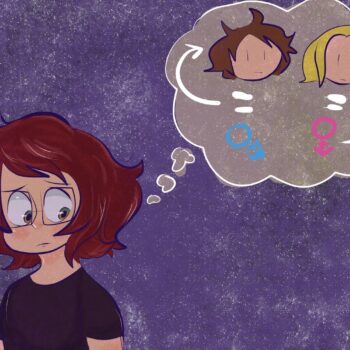Affirming Gender Diversity
Gender diversity in Canada, one student voice at a time
By Wes Delve
How do we define gender today? Well, there exists a wide variety of genders beyond the boy/man – girl/woman binary. And even though here in Canada, great strides have been made to uphold the rights of those who experience, for example, feelings of attraction in all its forms beyond the heterosexual, those strides have yet to be made where gender identity and gender expression are concerned.
This is why the Canadian Teachers’ Federation (CTF/FCE) new resource, Affirming Gender Diversity, the latest in the series of Student Voice Booklets, is so important. Not only does the booklet support teachers in raising awareness and addressing questions from students around the diversity of gender, as well as social concepts such as cisnormativity, cissexism and transphobia, it does so through the students own experiences.
When I first dove into the process of developing a new resource on the topic of gender diversity, I knew I would be embarking on a journey of exploration and learning: I was eager, I was excited about the work, and I thought I was prepared, so I gladly jumped in with both feet.
However, I quickly recognized that my initial expectations were but an inkling of what awaited me in terms of the depth and breadth of discoveries and new understandings I was about to encounter. As a Program Officer with responsibilities for the CTF/FCE Social Justice Program, I thought I already knew quite a bit. I came to discover that I understood very little about the topic, and the realization was disconcerting and humbling. On a deeper level still and even more disturbing lay the harsh realities and the painful, daily truths lived by gender diverse people in Canada, a country renowned for its equitable treatment of all its citizens. As I learned more about these truths, I was disheartened and somewhat embarrassed.
Yet when I began reading the submissions received from Canadian students, in response to the focus questions we had developed and which had been implemented by our volunteer teachers in their classrooms, I was buoyed up by the candour, the energy, the knowledge and the wisdom they contained. Truth be told, I teared up several times, and enthusiastically shared occasional gems with others involved in the project. I came to realize that this generation of Canadian students is not only blessed with insights which far surpass what I understood when I was their age, but it is well equipped and ready to fight against the discrimination it sees in the world around them.
I cannot express how grateful I am to have been immersed in this process with the many individuals who accompanied me on the journey, and to have learned so much. I am happier still that we are releasing this booklet on July 14, the International Non-Binary People’s Day, and that this new resource will be in Canadian classrooms in time for Canada’s national Gender Equality Week, which takes place annually during the third full week of September.
But even now, with a teaching and learning resource as rich as this, it does not begin to do justice to the suffering experienced by some of our most oppressed and marginalized people, or to the change that needs to happen when it comes to the acceptance and inclusion of gender diverse people. There is so much work to be done, and I sincerely hope that this resource begins to address the need for authentic, organic content on the topics of gender diversity and cissexism in Canadian schools.
This generation of students is indeed prepared to speak out, to inspire and to defend. And it is our job, as the educators who have the privilege of teaching and learning alongside such budding advocates for gender equality, to inspire them in return, to foster safe environments for them to ask questions and engage in open and honest discussions, and to encourage them to raise their voices to interrupt and challenge the injustices they encounter in the world around them. It is my hope that this resource will rally all educators to engage in this work, work that is vital to including, valuing, and lifting up individuals of all genders in our society.
The Student Voice booklets are a resource to support discussions about complex societal issues using the voice of students. These student voices form the content of the booklets from which lesson plans are developed. These booklets also help teachers to encourage students to discuss important issues, to challenge the status quo societal response, and to take action to increase awareness among the school population and the local community.
The five Student Voice booklets are: Poverty, What is it? (2014), Mental Health Stigma: Challenging it together! (2016), Truth and Reconciliation, What is it about? (2016), L’insécurité linguistique : comment la vivons-nous ? (2019), and Affirming Gender Diversity (2021).



